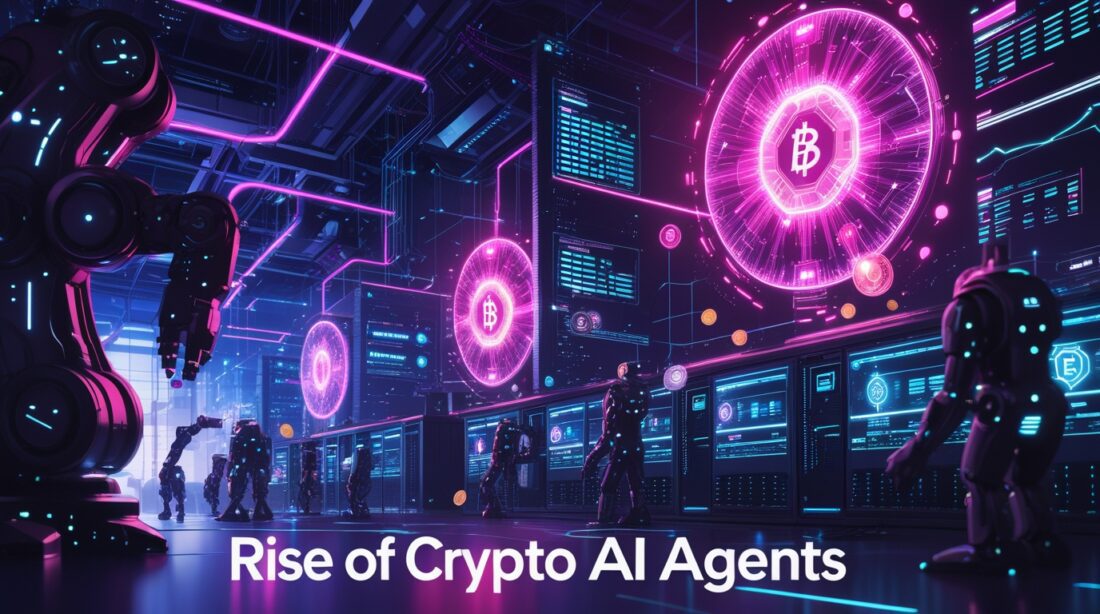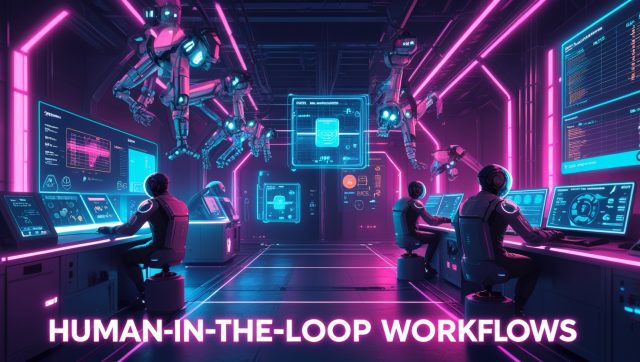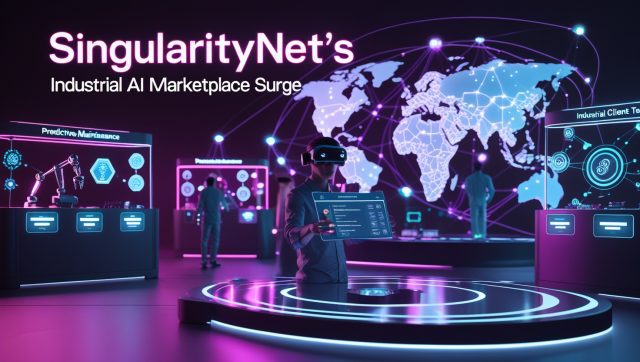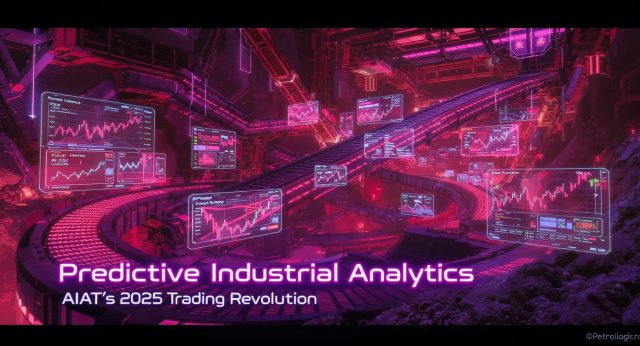In an industrial facility in Texas, a simple AI system detected a microscopic alignment issue in assembly robots that human technicians had missed for months. The fix took minutes, but the impact was monumental: $270,000 in annual savings from reduced waste and downtime. This isn’t futuristic speculation—it’s today’s industrial reality, showcasing the predictive maintenance ROI AI can deliver across manufacturing floors, as explored in how AI boosts predictive maintenance ROI in 2025.
How Industrial AI Is Powering 44 Billion in Revenue by 2025 and the Rise of Crypto AI Agents
The industrial AI market size 2025 represents one of the most significant yet understated technological shifts currently underway. While consumer AI applications like chatbots dominate headlines, a quieter revolution is transforming manufacturing, supply chains, and increasingly, cryptocurrency operations. This analysis explores AI in manufacturing revenue, crypto AI agent market value, and key industrial AI investment trends shaping 2025 and beyond.
Market Overview: The $44 Billion Industrial AI Foundation
The global industrial AI market reached $43.6 billion in 2024 and is projected to grow to $153.9 billion by 2030, reflecting an optimistic industrial AI market forecast 2030. This rapid expansion underscores strong AI hardware efficiency improvements and enterprise-scale adoption, driven by innovations like those seen in industrial AI and digital twins transforming industry in 2025. According to a McKinsey report on AI in manufacturing, companies adopting AI-driven automation are seeing up to 20% productivity gains in optimized facilities.
Despite the growth, industrial AI spending percentages remain small relative to budgets, with most manufacturers investing around 0.1% of total revenue. This gap highlights industrial AI implementation challenges and the need for scalable industrial AI data architecture requirements that support real-time analytics, a topic further detailed in edge AI vs cloud AI industrial optimization in 2025.
Why Industrial AI Revenue Is Accelerating: 5 Key Drivers
1. CEO-Driven AI Strategies
In 2025, manufacturing AI strategy development became a top priority for executives. Toyota’s $10.6 billion AI investment illustrates how firms are aligning digital strategies with measurable ROI, building frameworks that optimize AI for predictive maintenance savings and process automation. This trend aligns with why industrial AI implementation wins big in 2025 factories, where strategic leadership drives adoption.
2. Tangible ROI Demonstrated Through Success Stories
Companies like Renault and Georgia-Pacific are reporting strong returns from AI in manufacturing ROI cases—proving that AI adoption delivers measurable benefits. These projects validate industrial AI cost reduction statistics and the expanding role of AI for automated optical inspection, which improves quality control and throughput. For deeper insights, see how industrial AI agents slash energy costs in manufacturing 2025.
3. Quality & Inspection Use Cases Leading Adoption
Automated optical inspection leads adoption due to its strong AI quality inspection savings. Pegatron’s 99.8% accuracy is a benchmark for industrial AI benchmark performance, showing clear financial payback and reliability. This is further supported by advancements in 2025 computer vision robotics crushing defects, which highlights AI’s role in precision quality control.
4. Scalable Data Architectures Maturing
The rise of industrial DataOps growth signals a major shift toward integrated, data-driven operations. Unified data frameworks improve model accuracy and reduce AI infrastructure cost challenges, ensuring faster, more consistent deployment across production lines. A Gartner analysis on DataOps trends notes that companies with mature DataOps frameworks see 30% faster AI deployment cycles.
5. Workforce Transformation Through Upskilling
The industrial sector faces mounting AI workforce upskilling costs as companies train employees in new AI systems. To close the industrial AI skills gap solutions, manufacturers are investing in digital academies and reskilling initiatives, a strategy echoed in AI career pathing solves the silent talent crisis.
The Emerging Crypto AI Subsector: A $15.5 Billion Frontier
The crypto sector is witnessing its own industrial revolution through crypto AI agent market value growth. The integration of AI agent tokenization revenue models allows autonomous systems to execute blockchain operations efficiently, while crypto mining AI diversification supports hybrid business models across DeFi and infrastructure markets. This aligns with trends in AI crypto fraud detection stopping deepfake factory hijacks, where AI enhances blockchain security.
These decentralized agents are driving decentralized AI revenue models, offering predictive analytics, automated portfolio management, and continuous market surveillance—enhancing both transparency and profitability. For more on this convergence, explore injective: the future of AI-driven trading platforms.
Implementation Challenges: The Gap Between Potential and Profitability
Despite massive opportunities, the sector faces industrial AI implementation challenges like data quality issues and unclear ROI tracking. High AI infrastructure cost challenges and complex architectures can limit profitability, as discussed in industrial AI false positives: the 44 sensor crisis. A Forbes article on AI adoption hurdles highlights that 60% of industrial AI projects stall due to poor data integration.
For crypto projects, crypto AI trading agent performance varies widely, depending on training data and execution strategies. Meanwhile, traditional manufacturers must balance industrial AI consulting services and in-house expertise to ensure sustainable adoption, a challenge addressed in how human-in-the-loop workflows save millions.
Future Outlook: Strategic Implications for 2026 and Beyond
As industries modernize, industrial AI vendor landscape competition will intensify, blending manufacturing intelligence with AI chipset market industrial advancements. The convergence of crypto and industrial operations reflects a long-term shift toward shared compute infrastructures that enhance both reliability and cost efficiency, as seen in AI infrastructure vs bitcoin mining: why miners are pivoting in 2025.
Generative AI industrial applications are also expanding, enhancing design, maintenance documentation, and predictive modeling. As these systems mature, their influence will extend across industrial AI cost reduction statistics and energy optimization, with further details in AI-driven industrial energy optimization in 2025.
Hardware innovation continues to drive AI hardware efficiency improvements, reducing computational costs by 30% annually. These trends suggest stronger long-term returns and improved scalability for enterprise users.
Strategic Recommendations for Industrial AI Implementation
For organizations aiming to thrive in the industrial AI market size 2025, focus should center on:
- Targeting measurable ROI with AI in manufacturing use cases that improve efficiency and safety.
- Building solid industrial AI data architecture requirements before large-scale rollout.
- Investing in training to offset AI workforce upskilling costs.
- Leveraging expert industrial AI consulting services to overcome industrial AI implementation challenges.
- Monitoring crypto mining AI diversification and related AI agent tokenization revenue for cross-sector innovation.



